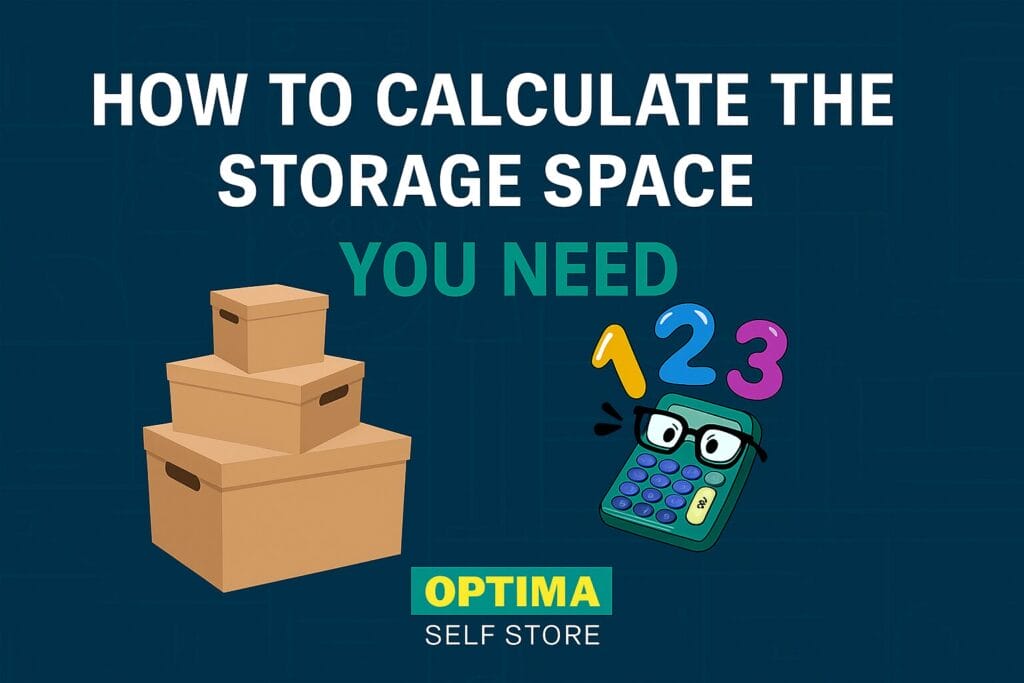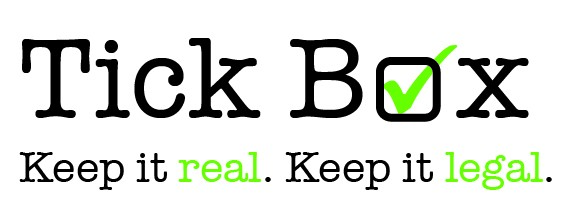How to Calculate the Storage Space You Need

Why Storage Space Calculation Matters
Comparing self-storage prices is tough if you don’t know how much space you need. Guess too small and you’ll run out of room. Go too big and you’ll pay for empty air. The fix is simple: plan your space with basic measurements. The key metric is volume—the amount of three-dimensional space your stuff occupies.
Accurate space planning also makes moving day faster and safer. When you know what fits, you can pick the right vehicle, map out stacking order, and avoid last-minute repacking. You’ll reduce the number of trips, protect fragile items with better stacking, and keep costs predictable from the start.
What Does ‘Volume’ Mean in Storage?
Volume is the total space an item takes up: Length × Width × Height. If a box measures 20 × 15 × 10 cm, its volume is 20 × 15 × 10 = 3,000 cm³. To convert cubic centimetres (cm³) to cubic metres (m³), move the decimal six places left: 3,000 cm³ = 0.003 m³ (because 1,000,000 cm³ = 1 m³).
If you prefer feet and inches, the idea is the same: measure length, width, and height in feet and multiply to get cubic feet. For quick mental math, round measurements up to the nearest whole number—padding your calculation slightly helps account for packing materials and odd shapes without constant recalculation.
Estimating Volume for Real-World Items
Most furniture isn’t a perfect cube, so picture an imaginary box wrapped around each item and measure that. This “bounding box” approach gives a reliable estimate for sofas, lamps, bikes—anything with awkward shapes. Whenever you can, pack smaller items into real boxes. Boxes stack neatly, protect your things, and turn a messy load into clean, measurable blocks.
For bulky pieces, remove legs, shelves, or cushions to shrink the bounding box. Tape doors and drawers shut so items can stand safely on edge, and note the orientation that minimizes height. Group soft goods (duvets, coats) into vacuum bags—they compress dramatically and free up volume for the hard-to-shrink items.
Why Volume Matters in Self Storage
Most storage pricing tracks the space you occupy—often shown in square feet for floor area or in cubic feet/metres when height is considered. Traditional self storage rents you a room or garage-like unit with fixed dimensions. Even if prices are listed by square feet, the unit’s height still determines how much you can stack—so thinking in volume helps you pick a size that fits without overspending.
Planning by volume also prevents common layout mistakes. Tall stacks of random boxes waste headroom and create unstable towers. If you size by volume and plan a simple grid—heavier, denser boxes at the bottom, lighter and fragile items on top—you’ll use the full height of the unit while keeping access aisles for the things you’ll need sooner.
What Can You Fit in Different Storage Sizes?
35 sq ft
Roughly the size of a garden shed. Can hold: a queen-sized bed, dining table and chairs, plus a stack of boxes and small appliances.
Add tall shelving to capture vertical space and you can fit seasonal items, sports gear, and archive boxes without crushing soft goods. It’s ideal for students between terms or anyone decluttering a small flat.
70 sq ft
About the size of a standard bedroom. Suitable for a 1-bed flat: sofa, armchairs, bed, dining furniture, white goods, wardrobes, and boxes.
With smart stacking and a clear aisle, you can keep frequently used items near the front—think toolboxes or business inventory—while large furniture nests at the back. Dismantled bed frames and tables reduce wasted space along walls.
105 sq ft
Approx. two bedrooms in size. Ideal for a 2–3 bedroom house: large sofa set, beds, wardrobes, appliances, plus garden tools/furniture and plenty of boxes.
This size works well for mid-move storage. Create zones—living room, bedroom, kitchen—so you can unload quickly and find things later. Use pallets or rails to keep items off the floor and allow airflow around appliances.
Use a Space Calculator to Make It Simple
A space calculator does the heavy lifting. Select items room-by-room—living room, bedroom, kitchen—and it totals the estimated volume for you. It’s flexible too: add custom items with rough measurements to fine-tune your result and build in a little buffer for walkways and safe stacking.
Need Help Estimating? Just Ask!
Request a no-obligation quote via the Optima Self Stores contact form and we’ll size your space for you. We charge the cheapest prices for storage and include 24-hour secure gated access for total peace of mind.
Final Thoughts – Make Storage Stress-Free
Know your volume, pick the right unit, and you’ll save money and avoid hassle. Use simple measurements, lean on a calculator, and think practically about stacking and boxing. Need help calculating your space? Get in touch with Optima Self Store today!



